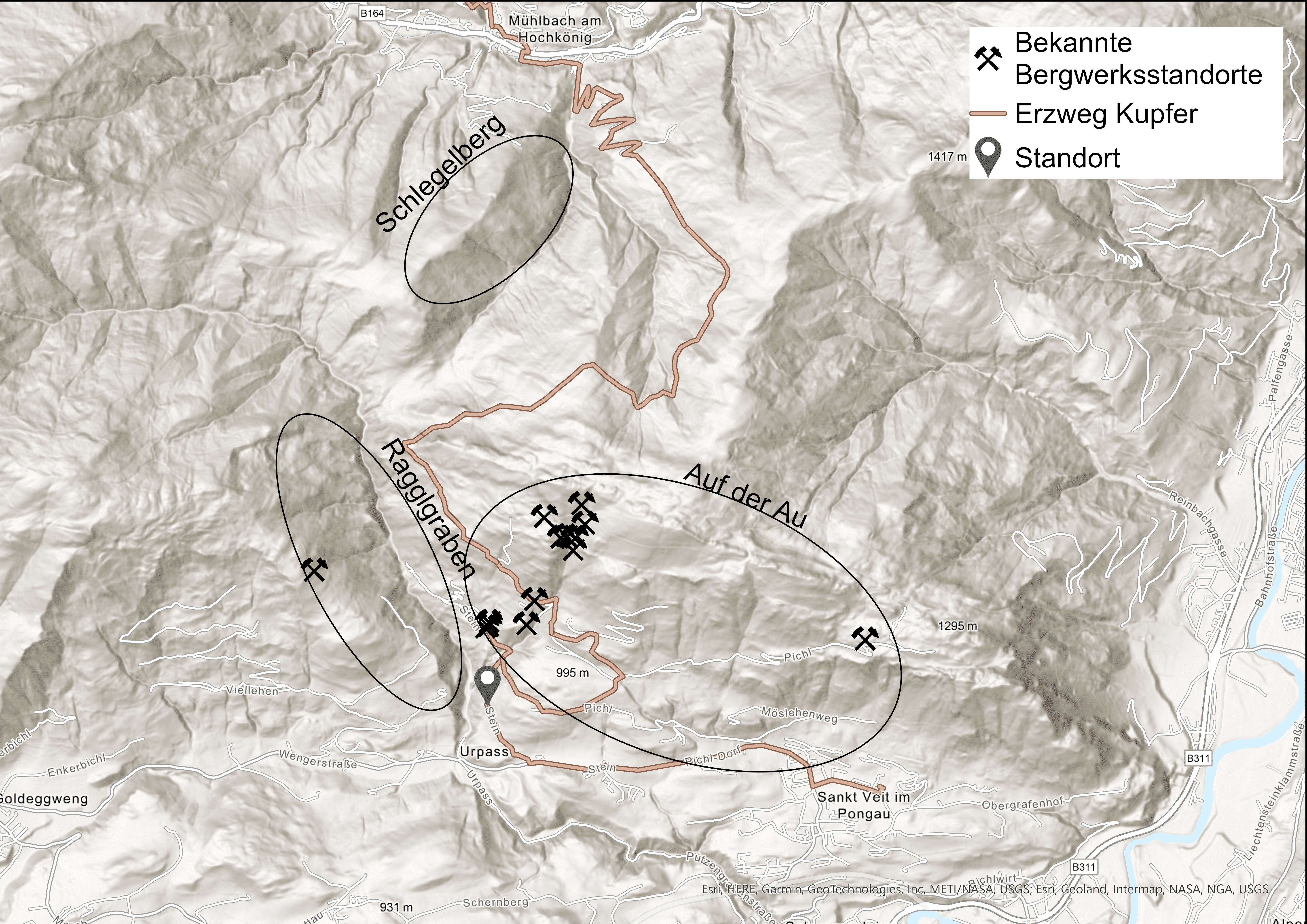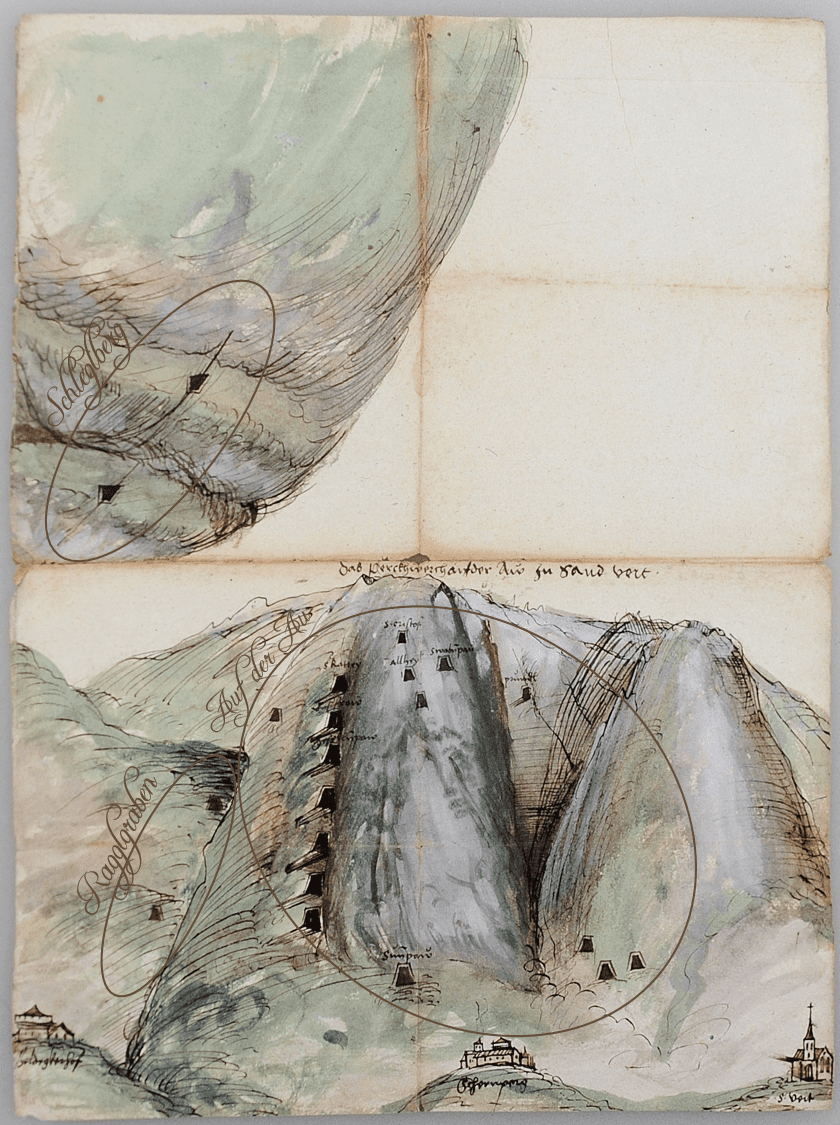Ragglgraben - Mining St. Veit
The St. Veit deposit consisted of several
mining districts, which were called
Schlegelberg, auf der Au, Ragglgraben,
Schwanhalt and Meseneben. There
is documented evidence of mining in
Ragglgraben from 1519 to 1531.
Mining was last mentioned as “reopened”
in 1563 and 1564 and may have acted as a
replacement for the abandoned pits at auf
der Au.
The Weitmoser mining shareholders,
known from gold mining in Gastein
and Rauris, operated both the mines
at auf der Au and in Ragglgraben. They
owned the pits further down, while the
Katzpeck mining shareholder owned the
upper tunnels. The names of the tunnels
Gesellenbau, St. Johann, Heilig Kreuz, St.
Adam, St. Georgian and Auffahrt have
been handed down from this time.
Copper ore mining was done here with low levels of golden silver. The ores obtained were processed at the smelting works in St. Veit im Pongau. The mines around St. Veit were classic examples of “subsidiary mines”, as small metallurgical suppliers were called.
Kids
St. Veit im Pongau
A very long time ago, in the early Bronze Age, around 2,000 to 1,500 years before Christ, people lived in the area where the municipality of St. Veit im Pongau is located today. The municipality is located on a mountain 763 metres above the Salzach Valley and is also known as the "sun terrace". It was discovered a long time ago that the air here is particularly healthy. Even in the time of Emperor Franz Josef, an important ruler, a lung sanatorium was built to help sick people. Today, it is a great place to relax and recharge your batteries.
The coat of arms of St. Vitus shows St. Vitus, the patron saint of the municipality. The red shield shows St Vitus in a cauldron on a burning pyre.
St. Veit im Pongau
As early as the Bronze Age, around 2,000 to 1,500 years before Christ, people lived in the area where the municipality of St. Veit im Pongau is located today. The municipality is located 763 metres above sea level above the Salzach Valley and is also known as the "sun terrace". The special thing about St. Veit is its healing climate, which was discovered back in the days of Emperor Franz Josef. Back then, a lung sanatorium was built to help people with respiratory problems. Today, the region is known for relaxation and recreation, which attracts many visitors.
The coat of arms of St Vitus depicts St Vitus, the patron saint of the municipality. The coat of arms is red and shows St Vitus in a cauldron on a burning pyre.
St. Veit im Pongau
The first settlement in what is now the municipality of St. Veit im Pongau dates back to the early Bronze Age (2,000-1,500 BC). Today's municipality lies 763 metres above sea level above the Salzach Valley and is known as the "sun terrace". Its special feature is the healing climate, the beneficial effects of which were already recognised in the time of Emperor Franz Josef. A lung sanatorium was built here. This tradition has been revitalised with the themes of relaxation and regeneration.
The coat of arms of St Vitus features St Vitus, the patron saint of the municipality. The coat of arms consists of a red shield on which St Vitus can be seen in a cauldron on a burning pyre.


